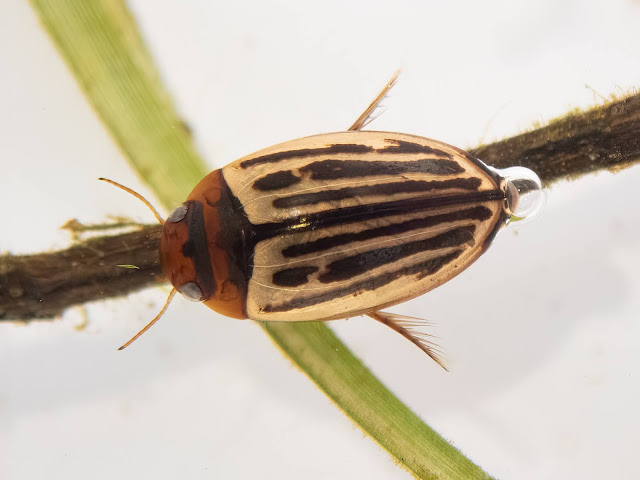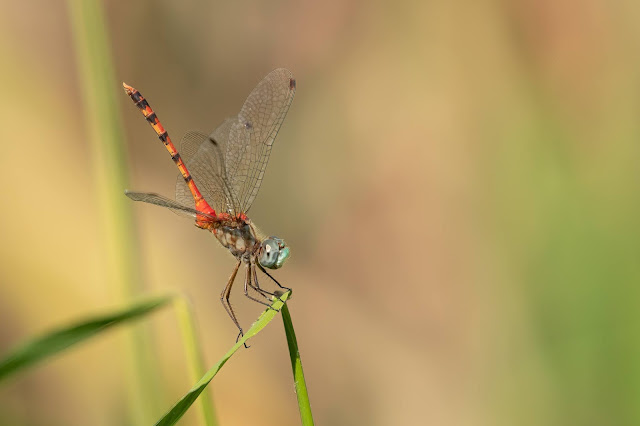Refilled!

The Wetland Again Full, October 27, 2021 After over two inches of rain this week, the water level at the wetland is as high as it gets in spring and early summer. For the sake of comparison, below is a photo from one year ago tomorrow, October 28, 2020. In addition to the total absence of water a year ago -- the wetland was dry before the end of August last year and to the best of my knowledge stayed dry until the end of November -- notice the difference in how much the trees had turned a year ago vs. this year at this time. Also notice how tall the dry-land plants had grown last year where the water had been since they had so much longer to grow at the end of summer. It will be interesting to see how much the almost continuous water in the wetland this year impacts things like whether or not dragonfly species that did not survive the dry spell last year successfully emerge next year, and if so, which ones. So far I have been able to identify only one species of dr...









